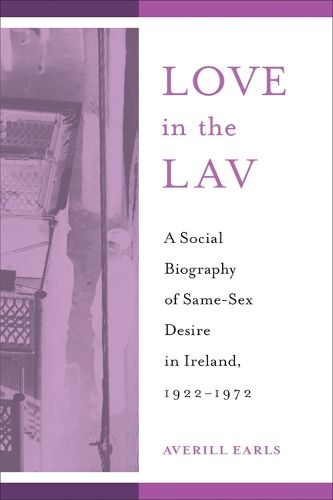Readings Newsletter
Become a Readings Member to make your shopping experience even easier.
Sign in or sign up for free!
You’re not far away from qualifying for FREE standard shipping within Australia
You’ve qualified for FREE standard shipping within Australia
The cart is loading…






Love in the Lav uncovers Ireland's queer lives of the past. Averill Earls investigates how same-sex-desiring men lived and loved in a country where their sexuality was illegal and seen as unnatural. Across seven social biographical chapters, each highlighting individuals at the nexus of these histories, Earls constructs a narrative of experiences through the larger contexts in which they are embedded. Earls uses courtroom testimonies, police records, and family history archives as well as "educated speculation" to show how structures governing male same-sex desire in Ireland played out on the bodies of the men who desired men, the teen boys who sold sex to men, and the way the Catholic-nationalist ethos shaped the Gardai who policed them.
Love in the Lav examines the experiences of people such as cabbie James Hand, who was put on trial for gross indecency, to provide a window into the queer working-class subculture of 1930s Dublin. Earls also focuses on issues of consent, especially with teens, and the unregulated queer Irish world of public figures, including Micheal Mac Liammoir, Hilton Edwards, Ronald Brown, and John Broderick. By examining twentieth-century Ireland through the lived experiences of ordinary same-sex-desiring Irish men who were relegated to obscurity by Irish society, Earls reveals the contradictions, possibilities, and magnitude of postcolonial Irish Catholic nationalism.
In the series Sexuality Studies
$9.00 standard shipping within Australia
FREE standard shipping within Australia for orders over $100.00
Express & International shipping calculated at checkout
Love in the Lav uncovers Ireland's queer lives of the past. Averill Earls investigates how same-sex-desiring men lived and loved in a country where their sexuality was illegal and seen as unnatural. Across seven social biographical chapters, each highlighting individuals at the nexus of these histories, Earls constructs a narrative of experiences through the larger contexts in which they are embedded. Earls uses courtroom testimonies, police records, and family history archives as well as "educated speculation" to show how structures governing male same-sex desire in Ireland played out on the bodies of the men who desired men, the teen boys who sold sex to men, and the way the Catholic-nationalist ethos shaped the Gardai who policed them.
Love in the Lav examines the experiences of people such as cabbie James Hand, who was put on trial for gross indecency, to provide a window into the queer working-class subculture of 1930s Dublin. Earls also focuses on issues of consent, especially with teens, and the unregulated queer Irish world of public figures, including Micheal Mac Liammoir, Hilton Edwards, Ronald Brown, and John Broderick. By examining twentieth-century Ireland through the lived experiences of ordinary same-sex-desiring Irish men who were relegated to obscurity by Irish society, Earls reveals the contradictions, possibilities, and magnitude of postcolonial Irish Catholic nationalism.
In the series Sexuality Studies